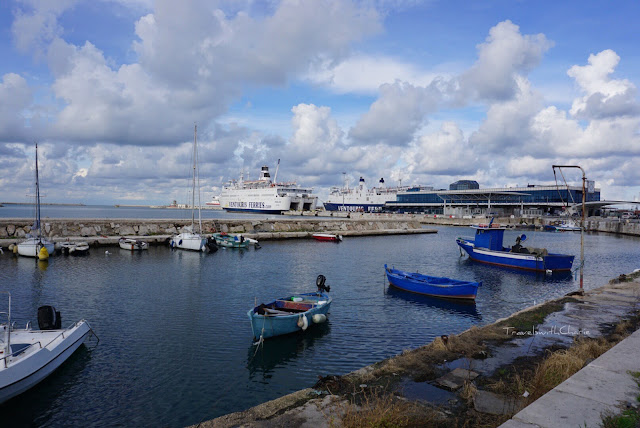 |
| Pontifical Basilica of San Nicola |
 |
| Bari, Old Town |
The narrow alleys of the old historic center are for motorbikes and walking to better appreciate the wrought iron balconies with colorful laundry left to dry and the excitement of finding a way out of the maze.
 |
| Orrechiette |
Bari Cathedral
The relics of St. Sabinus, bishop of Canosa and St. Columba are preserved in the Baroque style crypt of the Bari Cathedral.
These fragments of beautiful frescoes at the Cathedral have withstood the ravages of time.
 |
| Castello Svevo |
 |
| Port of Bari |
My trip to Puglia was one of the best trips I took in Italy in large part due to the people I met along the way who were friendly and helpful.
From the airport:
There's a shuttle bus that goes from the airport to the center of Bari every half hour and the fare is 4 euros (in January 2018).
Where to stay:
Best Western Hotel Executive
Corso Vittorio Emmanuele 201 in the city center
This is a 3-star hotel. Rooms are modern and spacious. The Old Town, sea promenade, restaurants, shopping and train station are all within walking distance. If you prefer to take a taxi to the train station, it's approximately 10 euros.
Where to eat:
Ristorante Murat at The Palace Hotel
Via F. Lombardi 13
Regional Italian cuisine and seafood choices.
Has the best view of the bell tower of Bari Cathedral from its rooftop terrace.
Koi Japanese Restaurant
Via de Rossi, 31
Brings in the lunch crowd with their all you can eat menu.
Italian Restaurants
There are many pizza and pasta restaurants along Corso Vittorio Emmanuele. A good pizza restaurant usually has a wood fired oven.
*Note: Restaurants in Bari are not open all day long. It's best to keep snacks to eat to tide you over until the scheduled opening time of the restaurant (12 noon for lunch and 7:30 p.m. for dinner). This was the case in January when there were fewer visitors in the city.
*****
Images by TravelswithCharie


